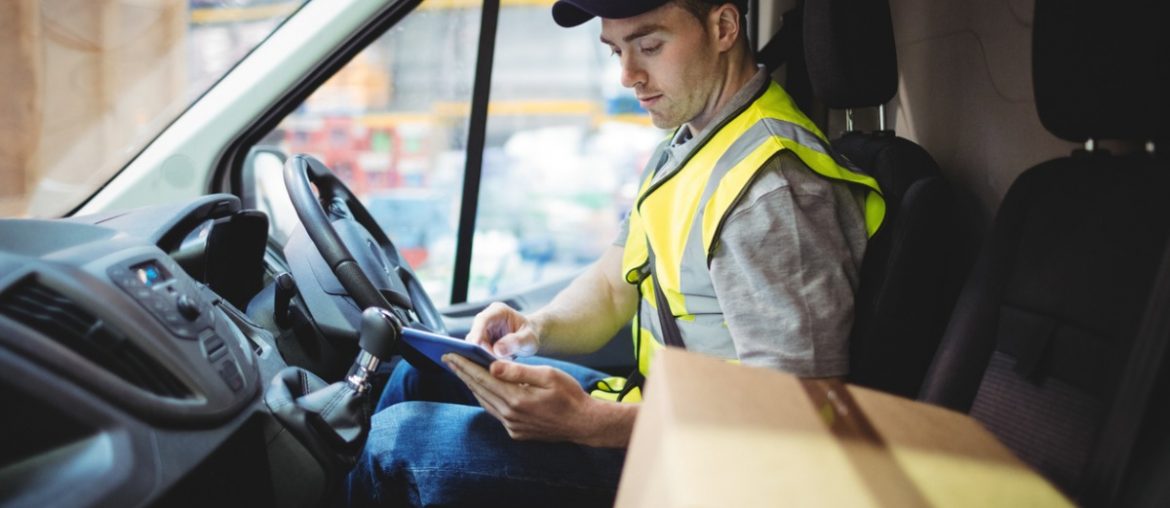Finding the right talent for your delivery service, regardless of whether you are just starting a delivery business or have years of experience already, can be a game-changer. Mastering how to hire a delivery driver is essential in today’s fast-paced market, where excellent customer service and timely deliveries are key. You’ll learn what makes an effective job description that attracts qualified candidates—detailing responsibilities and setting clear expectations from the get-go.
Dive into the nuts and bolts of how to hire a delivery driver through interviewing, background checks, leveraging social media for recruitment, and selecting suitable job boards—all steps to finding drivers who will keep your customers happy. Plus, understand how competitive compensation plays into attracting top-notch applicants.
- 1. Assess the Kind of Delivery Driver Your Business Needs
- 2. Craft the Perfect Job Description and Advertise the Position
- 3. Screening Applicants and the Interview Process
- 4. Contact References and Run a Background Check
- 5. Make an Offer and Negotiate
- 6. Onboarding and Training Your New Hires
- Hiring A Delivery Driver FAQs
1. Assess the Kind of Delivery Driver Your Business Needs
In your delivery business, one crucial decision you need to make is determining what type of driver best suits your needs. This decision will significantly influence how you operate and manage routes.
In-house Drivers versus Contractors or Third-party Drivers
The first step in this process involves deciding whether to hire an in-house driver, engage a contractor, or use third-party drivers. In-house drivers are employees who work directly for your company. They can provide better control over deliveries and customer service but come with added responsibilities, such as providing vehicles and managing benefits.
Contractor drivers are self-employed individuals hired on a contract basis. While they may offer more flexibility than in-house staff, their availability might not always align with your needs.
Third-party drivers belong to another company that handles all aspects of the delivery process. These services can be cost-effective and scalable, but they may lack personalization for customers.
2. Craft the Perfect Job Description and Advertise the Position
In your journey to hire a delivery driver, it’s crucial that you craft an effective job description and post your ad on multiple job boards. Whether you’re hiring an in-house employee locally or partnering with independent contractors, this step is vital for attracting qualified candidates.
Crafting Your Job Description
Your job description should clearly outline the specific skills and experience required for the role. However, beyond these basics, several other key elements must be included:
- The nature of goods being delivered (food items, packages, etc.)
- Type of vehicle to be used for deliveries (car, truck, etc.)
- Expected working hours and days
- Licensing requirements
- Safety standards and regulatory knowledge
A well-written job description not only attracts suitable applicants but also helps deter those who may not have the necessary qualifications or interests.
Posting Your Job Ad
Once your job ad is ready to go live, expect applications from interested candidates almost immediately. The less experience you require from applicants, such as if they’re new entrants into delivery services, increases the chances of receiving numerous applications swiftly.
To reach a wider audience, consider posting on top-recommended job posting sites like ZipRecruiter. This platform makes hiring seamless, whether you’re looking for long-haul drivers or local food delivery personnel. They offer free templates that can help shape your ad before distributing it across multiple boards at once—all with just one click!
3. Screening Applicants and the Interview Process
When you’re looking to hire a delivery driver for your business, it’s crucial to streamline the hiring process. Begin by identifying your must-have skills and qualifications. While no candidate may perfectly fit every criterion on your job description, focusing on about six essential skills can help narrow the pool of applicants.
Contacting top candidates for an interview is the next step. It’s recommended to call each applicant personally rather than just sending an email. This demonstrates professionalism and allows you to gauge their enthusiasm for the role and assess their communication abilities—key attributes for any successful delivery driver.
Conducting Effective Interviews
In order to evaluate all candidates fairly, ensure that when you conduct interviews, you ask each one similar questions. Having a list of standard interview questions helps maintain consistency while leaving room for spontaneous ones as conversations progress.
- “Can you describe your experience with route management software like RouteManager?”
- “How do you handle unexpected situations or delays during deliveries?”
- “What strategies do you use in planning routes and stops efficiently?”
- “Can you provide examples where effective communication improved customer satisfaction?”
4. Contact References and Run a Background Check
In the process of hiring a delivery driver, after you have conducted interviews and shortlisted your candidates, it’s time to dig deeper into their professional history. This is an essential step in ensuring that you hire not only skilled drivers but also those who are reliable and trustworthy.
Contacting References
Begin by contacting each candidate’s references—ideally, at least three supervisory ones. These individuals can provide valuable insights into the candidate’s skills, abilities as a delivery driver, work ethic, and overall suitability for your business needs. To make this process effective, consider asking key reference check questions. Doing so will help uncover potential red flags that might go unnoticed until it’s too late.
Running Background Checks
Apart from checking references, conducting background checks on prospective hires is highly recommended, especially when hiring delivery drivers. Ensure they possess clean driving records without any criminal convictions that may disqualify them from performing their duties effectively or legally.
5. Make an Offer and Negotiate
Once you have conducted a thorough evaluation process and identified the most suitable candidate for your delivery driver position, it’s time to make them an offer. This is a critical step in the hiring process that requires clear communication and understanding between both parties.
The first thing to do is initiate a phone call with the applicant. Use this opportunity not only to share the good news but also to discuss important details such as salary expectations, start date, driver job duties and any other relevant information. It’s crucial at this stage to ensure they are on board before proceeding further.
In addition to discussing these elements over the phone, include all pertinent details in a formal offer letter. The letter should clearly state their role’s responsibilities; having them sign off on their ability to handle these core duties provides accountability if performance issues arise later.
- Sending electronically: In today’s digital age, where everything happens online quickly, sending out offer letters has become more streamlined than ever before. Utilize online signature software like DocuSign, upload your prepared document there, and send it directly via email for review and signature by your chosen candidate.
- Timeframe: Give candidates ample time (at least a few days) to thoroughly read through everything before signing off. This ensures they fully understand what they’re agreeing upon.
A signed acceptance of your offer signals the green light for kickstarting your company’s onboarding process.
6. Onboarding and Training Your New Hires
The onboarding process for delivery drivers is a critical step that sets the foundation for successful operations. It ensures safety, enhances customer satisfaction, improves operational efficiency, maintains regulatory compliance, upholds your brand’s reputation, and promotes employee retention.
Developing an Onboarding Plan
To kick-start this process effectively, you need to develop a comprehensive onboarding plan. This should outline all the necessary steps new hires must take before they start their roles. You may also want to include information about company culture and values in this document to ensure alignment from day one.
Gathering the Necessary Documentation
Next comes gathering the necessary documentation. This could range from driving licenses to proof of insurance or any other relevant paperwork required by local laws or your company’s policies.
Preparing Drivers for Training
Your new hires must be prepared for training even before it begins. Provide them with resources like manuals or online courses that can help familiarize them with your business processes and expectations beforehand.
Ready to elevate your business? RouteManager’s cutting-edge routing software is designed to enhance efficiency and profitability. Experience the difference in your operations and customer satisfaction. Book a free demo with RouteManager now!
Hiring A Delivery Driver FAQs
How can I evaluate a candidate’s driving skills?
You should conduct a practical driving test during the interview process to assess their abilities behind the wheel. Additionally, request a copy of their driving record and contact previous employers for references.
What kind of training should be provided?
New hires must undergo comprehensive safety training, which includes defensive driving techniques and strict adherence to traffic laws. It is crucial that you regularly monitor driver performance and ensure vehicles pass routine safety checks.
What tools do drivers need?
All drivers require reliable navigation apps in addition to any company-specific delivery management software like RouteManager, one of the best route planners on the market. They also need dependable smartphones for effective communication and tracking while using route planner software.
How can I create efficient delivery routes?
A good practice is using route planning software or consulting with experienced drivers when creating efficient delivery routes. Factors such as traffic patterns and specific delivery windows must be considered, too.
What protocols should be followed in cases of accidents?
Instruct your drivers to adhere strictly to company protocols for reporting accidents; documenting details, exchanging information with other parties involved, and promptly notifying both the company and the proper authorities are essential steps here.




